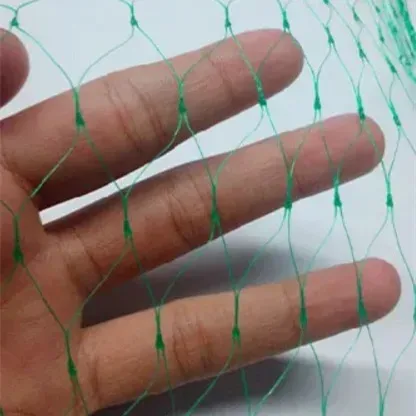-
 Afrikaans
Afrikaans -
 Albanian
Albanian -
 Amharic
Amharic -
 Arabic
Arabic -
 Armenian
Armenian -
 Azerbaijani
Azerbaijani -
 Basque
Basque -
 Belarusian
Belarusian -
 Bengali
Bengali -
 Bosnian
Bosnian -
 Bulgarian
Bulgarian -
 Catalan
Catalan -
 Cebuano
Cebuano -
 China
China -
 Corsican
Corsican -
 Croatian
Croatian -
 Czech
Czech -
 Danish
Danish -
 Dutch
Dutch -
 English
English -
 Esperanto
Esperanto -
 Estonian
Estonian -
 Finnish
Finnish -
 French
French -
 Frisian
Frisian -
 Galician
Galician -
 Georgian
Georgian -
 German
German -
 Greek
Greek -
 Gujarati
Gujarati -
 Haitian Creole
Haitian Creole -
 hausa
hausa -
 hawaiian
hawaiian -
 Hebrew
Hebrew -
 Hindi
Hindi -
 Miao
Miao -
 Hungarian
Hungarian -
 Icelandic
Icelandic -
 igbo
igbo -
 Indonesian
Indonesian -
 irish
irish -
 Italian
Italian -
 Japanese
Japanese -
 Javanese
Javanese -
 Kannada
Kannada -
 kazakh
kazakh -
 Khmer
Khmer -
 Rwandese
Rwandese -
 Korean
Korean -
 Kurdish
Kurdish -
 Kyrgyz
Kyrgyz -
 Lao
Lao -
 Latin
Latin -
 Latvian
Latvian -
 Lithuanian
Lithuanian -
 Luxembourgish
Luxembourgish -
 Macedonian
Macedonian -
 Malgashi
Malgashi -
 Malay
Malay -
 Malayalam
Malayalam -
 Maltese
Maltese -
 Maori
Maori -
 Marathi
Marathi -
 Mongolian
Mongolian -
 Myanmar
Myanmar -
 Nepali
Nepali -
 Norwegian
Norwegian -
 Norwegian
Norwegian -
 Occitan
Occitan -
 Pashto
Pashto -
 Persian
Persian -
 Polish
Polish -
 Portuguese
Portuguese -
 Punjabi
Punjabi -
 Romanian
Romanian -
 Russian
Russian -
 Samoan
Samoan -
 Scottish Gaelic
Scottish Gaelic -
 Serbian
Serbian -
 Sesotho
Sesotho -
 Shona
Shona -
 Sindhi
Sindhi -
 Sinhala
Sinhala -
 Slovak
Slovak -
 Slovenian
Slovenian -
 Somali
Somali -
 Spanish
Spanish -
 Sundanese
Sundanese -
 Swahili
Swahili -
 Swedish
Swedish -
 Tagalog
Tagalog -
 Tajik
Tajik -
 Tamil
Tamil -
 Tatar
Tatar -
 Telugu
Telugu -
 Thai
Thai -
 Turkish
Turkish -
 Turkmen
Turkmen -
 Ukrainian
Ukrainian -
 Urdu
Urdu -
 Uighur
Uighur -
 Uzbek
Uzbek -
 Vietnamese
Vietnamese -
 Welsh
Welsh -
 Bantu
Bantu -
 Yiddish
Yiddish -
 Yoruba
Yoruba -
 Zulu
Zulu
steel fibers in concrete
The Role of Steel Fibers in Concrete Enhancing Performance and Durability
Concrete is one of the most widely used construction materials in the world, valued for its compressive strength, durability, and versatility. However, it has inherent weaknesses, particularly in tensile strength and crack resistance. To address these limitations, steel fibers have emerged as a significant additive that enhances the performance and durability of concrete. This article explores the role of steel fibers in concrete, their benefits, and applications in modern construction.
Understanding Steel Fibers
Steel fibers are short, discrete lengths of steel that are uniformly dispersed within concrete. Typically, they range from 0.5 inches to 2 inches in length and have a diameter of about 0.02 to 0.05 inches. The fibers can be made from various types of steel, including carbon steel, stainless steel, and other alloys, depending on the desired properties of the concrete.
Benefits of Steel Fibers in Concrete
1. Increased Tensile Strength One of the primary benefits of incorporating steel fibers into concrete is the significant increase in its tensile strength. Steel fibers create a composite material that resists cracking more effectively than traditional concrete. This enhanced tensile capacity allows the structure to withstand tensile forces and bending without failing.
2. Improved Crack Resistance Concrete is prone to cracking due to shrinkage, temperature changes, and applied loads. Steel fibers help to distribute stresses within the concrete matrix, significantly reducing the formation and propagation of cracks. This is particularly vital for applications subject to dynamic loading, such as pavements, industrial floors, and precast elements.
3. Enhanced Ductility Unlike conventional concrete, which is brittle and fails suddenly, concrete reinforced with steel fibers exhibits greater ductility. This property allows structures to deform under stress rather than catastrophically collapse. This ductile behavior is crucial in seismic zones, where buildings must endure dynamic forces during earthquakes.
steel fibers in concrete

4. Reduced Construction Costs Using steel fibers in concrete can lead to cost savings in several ways. First, because steel fibers reduce the need for traditional reinforcement methods (e.g., rebar), labor and material costs can be lowered. Secondly, the enhanced durability and crack resistance can lead to lower maintenance costs over the lifecycle of the structure.
5. Versatility in Applications Steel fibers can be used in a wide range of concrete applications, from industrial floors and pavements to shotcrete in tunneling and slope stabilization. Their ability to improve performance makes them ideal for high-performance concrete used in challenging environments.
Applications of Steel Fiber-Reinforced Concrete (SFRC)
The use of SFRC has been gaining traction across various sectors in construction. In pavements, the fibers enhance load-bearing capacity and longevity, reducing the need for repairs and maintenance. In industrial settings, such as factories or warehouses, SFRC can withstand heavy machinery and harsh conditions. Additionally, in precast concrete elements, such as beams and panels, adding steel fibers can improve their structural integrity and durability.
In the realm of infrastructure, bridges and tunnels benefit immensely from steel fiber reinforcement. The fibers improve resistance to shear forces and enhance the durability of concrete exposed to harsh environmental conditions. These properties are particularly beneficial for infrastructures located in regions with severe climatic variations.
Conclusion
The integration of steel fibers in concrete represents a significant advancement in construction technology. By enhancing tensile strength, crack resistance, and ductility, steel fibers provide essential benefits that meet the demands of contemporary construction projects. As the construction industry continues to evolve, incorporating innovative materials like steel fibers will be crucial for developing sustainable and durable structures capable of withstanding the challenges of the future. With ongoing research and advancements in fiber technology, the potential for steel fiber-reinforced concrete in various applications is vast, promising a new era of performance and reliability in construction.
-
Shipping Plastic Bags for Every NeedNewsJul.24,2025
-
Safety Netting: Your Shield in ConstructionNewsJul.24,2025
-
Plastic Mesh Netting for Everyday UseNewsJul.24,2025
-
Nylon Netting for Every UseNewsJul.24,2025
-
Mesh Breeder Box for Fish TanksNewsJul.24,2025
-
Expanded Steel Mesh Offers Durable VersatilityNewsJul.24,2025











